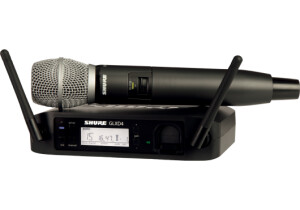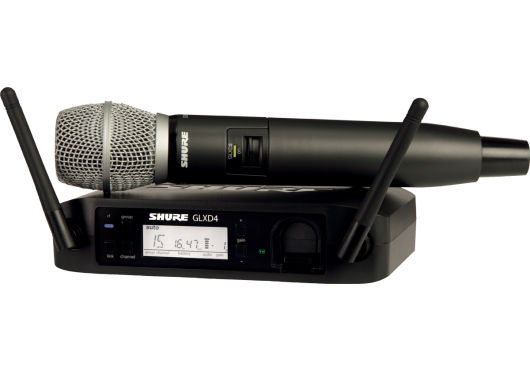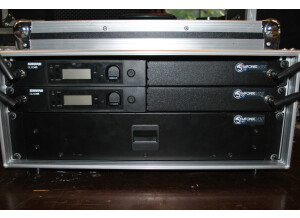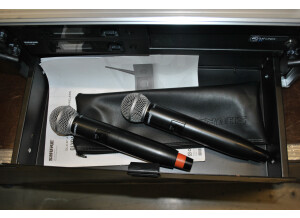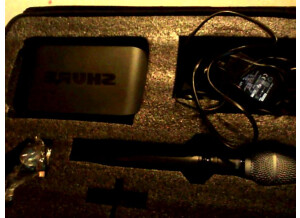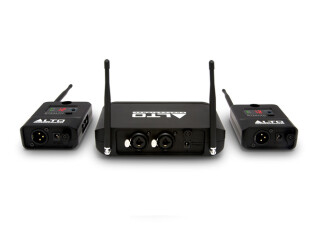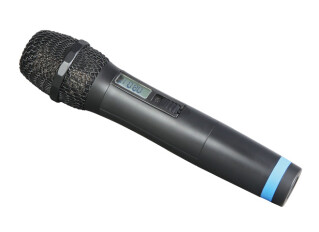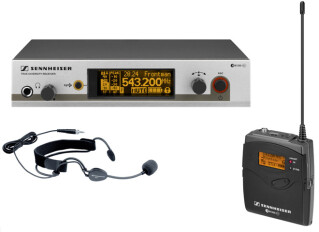Annonces GLXD24/SM86
Alerte nouvelle annonceImages
Avis
5.0/5(1 avis)
100 %
Donner un avis
WOW!
Publié le 18/04/14 à 12:08I could borrow this Shure GLXD24/SM86 (condenser, about US$ 650.-) along with a Sennheiser XSw 35 (dynamic, about US$450) for about a week and check them out.
I thought it was going to be hard to decide between the two, but I was wrong. This wireless SM86 just blew my mind.
SOUND
The sound is just incredible. You get the definition of a good live condensor microphone (I personnally like and use the EV Cardinal).
I tought that in a loud environment, the dynamic XSw might do just as well, but I was wrong. When rehearsing with our fusion band (www.soundcloud.com/soark), everyone found that at similar volumes, my voice could be heard clearly with the Shure, but not so much with the Sennheiser.
The Shure makes me feel comfortable, because I know I can sing into it high or low, soft or yell all I've got and it will sound wonderful.
This may be subjective, but singing the same loud song felt tiring with the Sennheiser and relaxing with the Shure. Wow...
FEEDBACK RESISTANCE
To my surprise, in our 3x4m rehearsal room, monitors cranked way up, the Shure didn't seem to generate more feedback problems than the Sennheiser.
WIRELESS
The digital wireless works great. There is no fuzz at all and I had to go outside the building (10m, one brick and one concrete walls in between) to get the sound to break down.
You can't change the antennas on the receiver, but I doubt my wireless needs will surpass the original ones in the next few years.
My only uncertainty: I wonder how solid the link is gonna be on stages with many 2.4Ghz devices around.
HARDWARE
The battery system is very cool. You get many hours out of it before the light turns red and when that happens, you can still go on for at least an hour (haven't tried to go further).
To charge the battery, you can pop it right into the receiver unit, or you can even plug the mic directly into a USB port to charge the battery (micro USB).
The mic and receiver are made of plastic, which is light and looks solid enough for my needs.
I thought it was going to be hard to decide between the two, but I was wrong. This wireless SM86 just blew my mind.
SOUND
The sound is just incredible. You get the definition of a good live condensor microphone (I personnally like and use the EV Cardinal).
I tought that in a loud environment, the dynamic XSw might do just as well, but I was wrong. When rehearsing with our fusion band (www.soundcloud.com/soark), everyone found that at similar volumes, my voice could be heard clearly with the Shure, but not so much with the Sennheiser.
The Shure makes me feel comfortable, because I know I can sing into it high or low, soft or yell all I've got and it will sound wonderful.
This may be subjective, but singing the same loud song felt tiring with the Sennheiser and relaxing with the Shure. Wow...
FEEDBACK RESISTANCE
To my surprise, in our 3x4m rehearsal room, monitors cranked way up, the Shure didn't seem to generate more feedback problems than the Sennheiser.
WIRELESS
The digital wireless works great. There is no fuzz at all and I had to go outside the building (10m, one brick and one concrete walls in between) to get the sound to break down.
You can't change the antennas on the receiver, but I doubt my wireless needs will surpass the original ones in the next few years.
My only uncertainty: I wonder how solid the link is gonna be on stages with many 2.4Ghz devices around.
HARDWARE
The battery system is very cool. You get many hours out of it before the light turns red and when that happens, you can still go on for at least an hour (haven't tried to go further).
To charge the battery, you can pop it right into the receiver unit, or you can even plug the mic directly into a USB port to charge the battery (micro USB).
The mic and receiver are made of plastic, which is light and looks solid enough for my needs.
10
»
Fiche technique
- Fabricant : Shure
- Modèle : GLXD24/SM86
- Série : GLX-D
- Catégorie : Systèmes sans fil
- Fiche créée le : 02/08/2013
Nous n'avons pas de fiche technique sur ce produit
mais votre aide est la bienvenue
Distribué par audia
»
Autres catégories dans Micros sans fil
Autres dénominations : glxd24sm86, glxd 24 sm 86, glxd24 sm86, glxd24sm86, GLXD24e SM86


